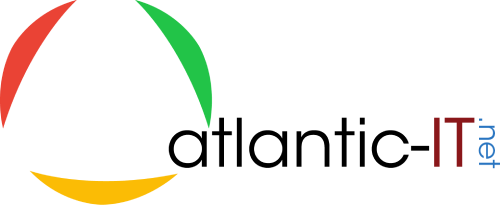
How an IT Subscription Program Keeps You On Budget and Operating Effectively
IT Subscription Programs (Budgets/Planning)
Subscription-based businesses are really taking off. You see an interesting tool in a friend’s kitchen and he mentions that it came in his subscription box. You pull up Netflix to see what’s available to watch that is of interest to you on your schedule. You pick up a box on your front porch with dishwasher detergent from your Amazon subscription service. Everywhere we look, more and more companies are moving to value-added subscription programs, and IT is no different. Here’s a look at the benefits of enrolling in an IT subscription program to keep your digital assets operating efficiently and your business on a budget.
How an IT Subscription Program Keeps You On Budget and Operating Effectively
As an early adopter of the IT subscription program concept, Tien Tzou was an executive at Salesforce.com when the company developed a new delivery model for its software in the late 90s, recognizing the potential of software-as-a-service (SaaS) and subscription-based business models. He moved on to co-found Zuora in 2007, noting “We made a bet that this whole subscription business model was not going to be limited to software companies, but that every business one day would become a subscription business. What you’re seeing happening now in 2020 is exactly that. Businesses are all transforming into subscription-based businesses.”
Part of the shift that digital transformation is bringing about is access to products and services rather than direct sales of the products or services. Instead of spending a large amount of money on software that may or may not work well for your company, SaaS provides you with a regular subscription to the software, typically at a much-reduced rate. This allows the business to use the software extensively without a big upfront cost, but a manageable monthly subscription cost that rarely changes. If the software doesn’t end up working out well in a few months, you can simply switch to a different SaaS software solution without losing a big investment.
But why have IT subscription programs become so popular? Though much of marketing in the past has focused on the idea that products and services are what customers want, the recent changes that digital transformation has brought about in our society have created a generation of consumers who want solutions to their problems. Instant gratification with downloads, simple solutions to lower stress levels, and services that make life easier overall have become dominating factors in everyday life, and the business world really isn’t any different. It provides a level of flexibility in terms of being able to increase or decrease related services, change software subscriptions, or temporarily pause a subscription when it’s not currently being used.
Customers Become Collaborators
When products are traditionally rolled out, the company may have spent a lot of time, effort, and money to create a product that customers want. However, tightening logistics and quickly-changing customer priorities are making much of this process a thing of the past. Subscription-based models allow customers to participate in the design process. Once the software is launched, the company listens to the customer’s comments to the company, on social media and other outlets to determine where the product needs to be tweaked to make the best possible impact. Customers can often do a great deal of customization and configuration to make sure they can easily access only the features they need on a regular basis.
This process often steers the software company in a different direction than they had originally intended, but allows them to avoid wasting time and money to provide features customers don’t truly want to begin with. Tzou states, “We would launch a service, and once it was out there, we would listen to our customers, and they would actually steer us toward a place that was slightly different from where we thought we were going. You now have the ability to gather information from the customer, which completely allows you to rethink how you approach innovation.” Because SaaS is often cloud-based, customers have a better view of how customers use their products, making it easier to make intelligent changes to the software.
SaaS Benefits Both Sides of the Equation
SaaS isn’t just about benefiting the software company or delivering a product that is more in-line with what the customer wants, it’s about providing a wide range of benefits to both sides. Software companies don’t waste time creating features that their customers don’t really want, and the customer doesn’t have to make a big upfront investment to be able to use the software. The information from software development drives the company’s marketing efforts, focusing on what the customers are actually interested in. Customers receive a software solution that can be highly customized and adapted to their specific needs. If the software doesn’t work for their specific needs, the customer can just move on to a new subscription without losing a big investment.
Because IT subscriptions exist at a set rate, your accounting department knows exactly how much it will cost every month for the software and can function knowing that management won’t make a big investment one month just to have to make another big investment a few months down the road when the first software solution didn’t really work. You can explore the software and take time to transition over to it because your company is not losing a lot of money by not immediately implementing the software. If you have a remote workforce or part of your workforce travels frequently, you can rest assured that they can quickly access the resources and software they need.
SaaS provides a wide range of opportunities to businesses, allowing your company to approach digital transformation without a big upfront investment. This allows you to explore what will or will not work for your company without a lot of risks. If you’re interested in exploring your SaaS options, Atlantic-IT can help. Please feel free to contact us today with any questions or concerns.
Click here to get started or call us at (877) 936-3328.





